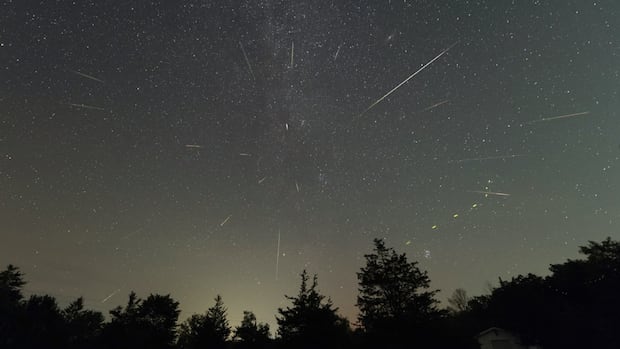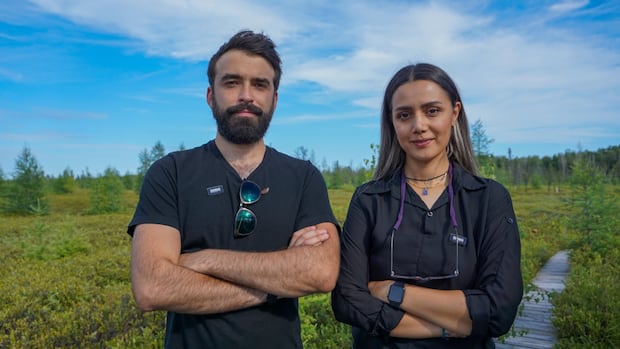One of the helicopters used in the province’s wildfire fighting efforts lost power this week over a lake in northwestern Ontario, forcing the pilot to use another way to land it safely in shallow water.
The pilot was uninjured and the Transportation Safety Board of Canada (TSB) is gathering more information.
The incident occurred shortly before 6 p.m. CT on Monday, a TSB spokesperson told CBC News in an email on Wednesday.
“A Guardian Helicopters Inc. Bell 205A-1 helicopter was conducting aerial firefighting activities near Sandy Lake, Ont. Shortly after scooping a load of water from a lake, the engine stopped producing power,” Chris Krepski said Wednesday.
The pilot, who was the only one in the chopper, released “the water load and conducted an autorotation landing in a shallow part of the lake.”
Autorotation is a manoeuvre that pilots use to land a helicopter after it loses power. It involves using the upward airflow through the rotor blades to glide the helicopter to safety.
Ontario ‘thankful the pilot is safe’
Wildfire fighting efforts have been underway in different parts of Canada, in one of the country’s worst wildfire seasons.
Canadian Armed Forces personnel were called to Sandy Lake First Nation — a remote Oji-Cree community about 600 kilometres northwest of Thunder Bay — on June 8 to assist in the evacuation of over 2,000 people due to the region’s largest wildfire, Red Lake 12.
Red Lake 12, which was discovered May 28 and remains not under control, spans more than 177,000 hectares. It also prompted the evacuation of more than 800 people from Deer Lake First Nation, and a number of people from Keewaywin and North Spirit Lake.
Krepski said that in the case of the Monday helicopter incident, an emergency locator transmitter was activated once it started going down and another helicopter in the area responded to the site.
The TSB was quickly notified and is collecting information, but isn’t currently deploying any investigators as the incident is being assessed, he said.
A spokesperson for Ontario’s Ministry of Natural Resources said it’s aware of what happened and is “thankful the pilot is safe.”
Alexandra Weber, a ministry spokesperson, said its aviation and safety experts “will fully co-operate” with Transport Canada and the Transportation Safety Board.
The province’s latest wildfire update, on Tuesday night, said Red Lake 12 had not moved any closer to Sandy Lake First Nation or Deer Lake First Nation, “owing to the firefighting work that has been performed on those sections of perimeter.”
“Heavy helicopters with buckets and water bombers have been used in recent days to help reduce fire intensity,” Ontario Forest Fires said. “Firefighting crews, supported by bucketing helicopters, are making progress in consolidating hose lines and maintaining protective sprinkler systems on buildings and infrastructure in Deer Lake, Sandy Lake and Keewaywin.”
The wildfire hazard varies across the region. While rainfall has lowered the risks in the Thunder Bay and Fort Frances sectors, as well as the southern half of Nipigon, the far north is seeing moderate to high hazards.







